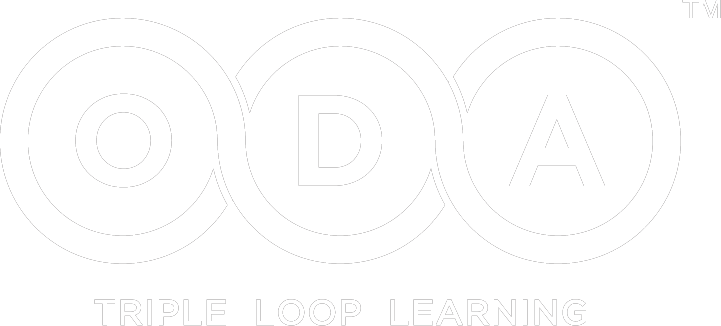Mindset Change and Pavlov’s Dogs


Santhosh Babu
The Indian pharmaceutical industry came under criticism several times due to the behaviour of their sales people towards doctors. Recently a sting operation by a media house showed the unethical and greedy behaviours of doctors towards pharmaceutical executives. organizations and individuals struggle with changing unproductive, unhealthy, and limiting behaviours. It is said that one can keep a dog’s tail in a straight tube and hold it there for as long as the dog lives.
But it will curl as soon as you take it out of the tube! Most of our behaviours that we would like to change have become habits and changing habits is difficult. So changing the habits practised in an organization for many years becomes even more difficult. Most behaviours that we demonstrate have stayed with us due to some positive reinforcement in the past.
Those behaviours got us some results, made us feel good and served a purpose. In other words, they have become conditioned behaviours. We see the stimulus, which can be a cigarette, a customer, or an opportunity, and our autopilot response to that stimulus is pre-determined. Russian physiologist Ivan Pavlov accidently discovered the classical conditioning theory similar to the way Pfizer accidently invented Viagra.
During the 1890s, Pavlov was looking at salivation in dogs in response to being fed, when he noticed that his dogs would begin to salivate whenever he entered the room, even when he was not bringing them food. Then he experimented by ringing a bell each time he gave food to the dogs and found that by repeatedly pairing a motivationally significant stimulus (such as food) with a particular signal (such as a ringing bell) will result in a conditioned response when the signal is encountered (the bell rings in absence of food). So later when he just rang the bell without giving them food, they still salivated.
And Pavlov told us that these dogs have been conditioned and for them now the bell means food. Anyone interested in advertising has heard about Claude Hopkins who published his classic book Scientific Advertising in 1923. When Hopkins signed on to promote Pepsodent, he realised he needed to find a trigger for its daily use. According to him, a trigger is a cue that would initiate a thought in our minds which leads to behaviour that will get a reward. He studied a lot of dental books and found a reference to the mucin plaques on teeth, which he later called ‘the film’. “That gave me an appealing idea. I resolved to advertise this toothpaste as a creator of beauty,” he said in his book.
Soon, cities were plastered with Pepsodent ads. “Just run your tongue across your teeth,” read one. “You’ll feel a film-that’s what makes your teeth look ‘off color’ and invites decay.” “Note how many pretty teeth are seen everywhere,” read another. “Millions are using a new method of teeth cleansing. Why would any woman have dingy film on her teeth? Pepsodent removes the film!” All habits-no matter how large or small-have three components, according to neurological studies. There’s a cue-a trigger for a particular behaviour; a routine, which is the behaviour itself; and a reward, which is how your brain decides whether to remember a habit for the future. Hopkins portrayed the tooth film as something unnatural or undesirable though and promised to remove it and make your teeth better looking. Who doesn’t want a prettier smile? Particularly when all it takes is a quick brush with Pepsodent?
After repeated advertising, the cue or the trigger becomes like the Pavlovian bell. When you feel the film on your teeth, you think about Pepsodent and brushing. At the end of the day, aspiration of every brand is to get a conditioned response from the customer when they hear the brand name or see it. So to establish a habit, a cue that triggers the desirable behaviour, and a reward that is exciting is all it takes. Once you repeat this over and over again, the brain is conditioned and the cue becomes like a hypnotic suggestion. So many of our day-to-day decisions – which you might like to think are your choice – might be the automatic response of your brain to various cues. The success of Coke, Pepsi and fast foods can be explained to a larger extend to the advertising that uses this methodology.
A lot of people use hypnosis to break away from habits because hypnotic suggestion reaches the subconscious mind where conditioned beliefs and behaviours are located. Psychologist Albert Ellis developed a simple model that he called ABC model to help people understand their illogical beliefs and behaviours.
Ellis suggested that people mistakenly blame external events for unhappiness. He argued, however, that it is our interpretation of these events that truly lies at the heart of our psychological distress.
A – Activating Event: Something happens in the environment around you.
B – Beliefs: You hold a belief about the event or situation.
C – Consequence: You have an emotional response to your belief.
So the activating event could be an advertisement, the news of a new restructuring, a new way of working, a new CEO that could evoke certain thoughts and beliefs and, finally, reward the behaviour at the end. While most organizations struggle with changing mindsets, behaviours and habits of people, we might be using less effective methodologies for that. So it is time to get Claude Hopkins into the boardroom and examine how his methodology of changing millions of people’s belief could be of use in organizations. Interestingly, marketing people always use a story that could trigger a cue in the minds of the customer when they advertised, but when CEOs try to communicate mindset change, they use PowerPoint presentations. So, create a compelling need and story for change like the sheath in your teeth, create reward for the new behaviour, and condition the new behaviour like Pavlov with a bell in your hand. You could drive mindset change and new habits in your organization.
Please click here to download the latest OD PUBLICATION.

